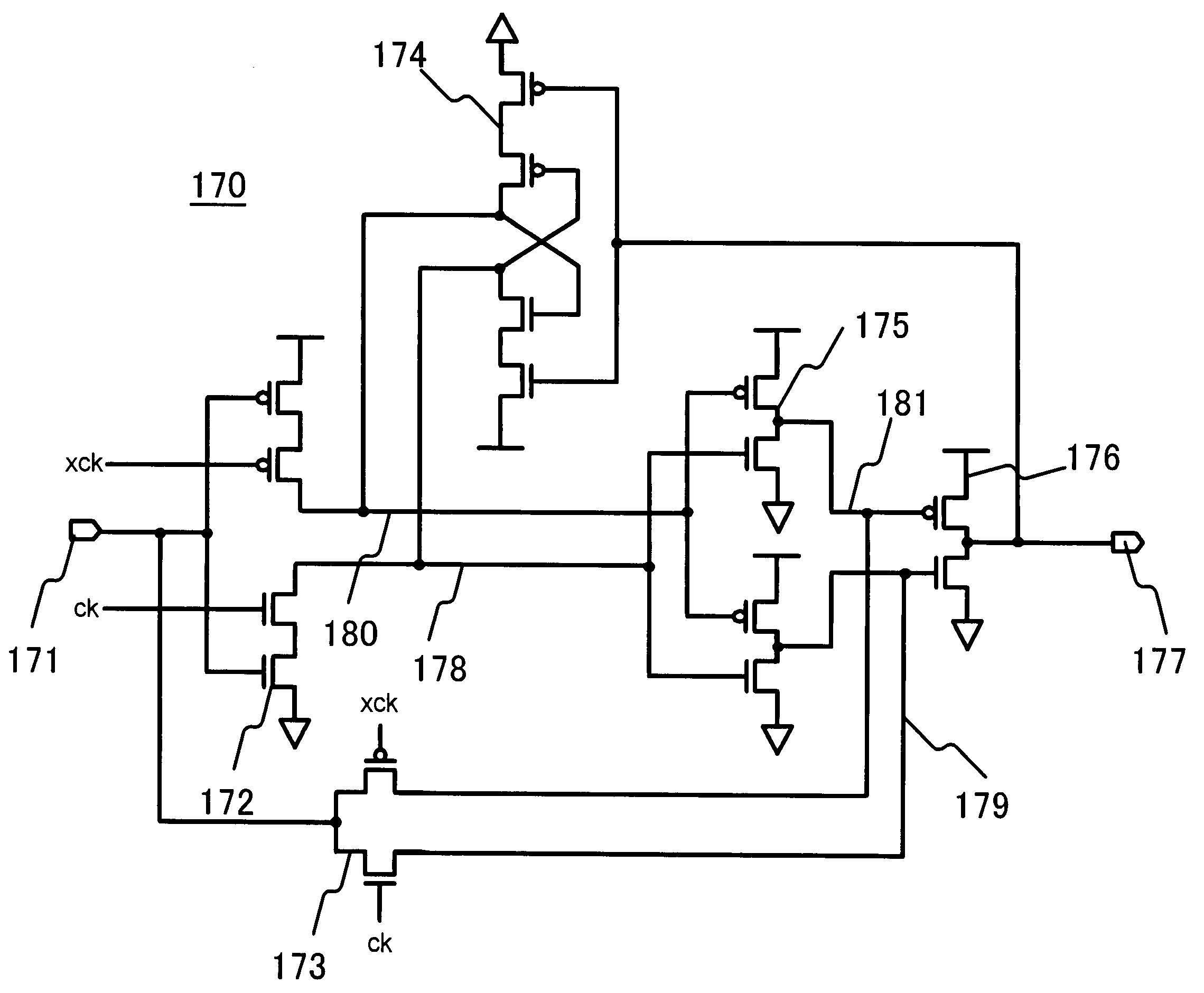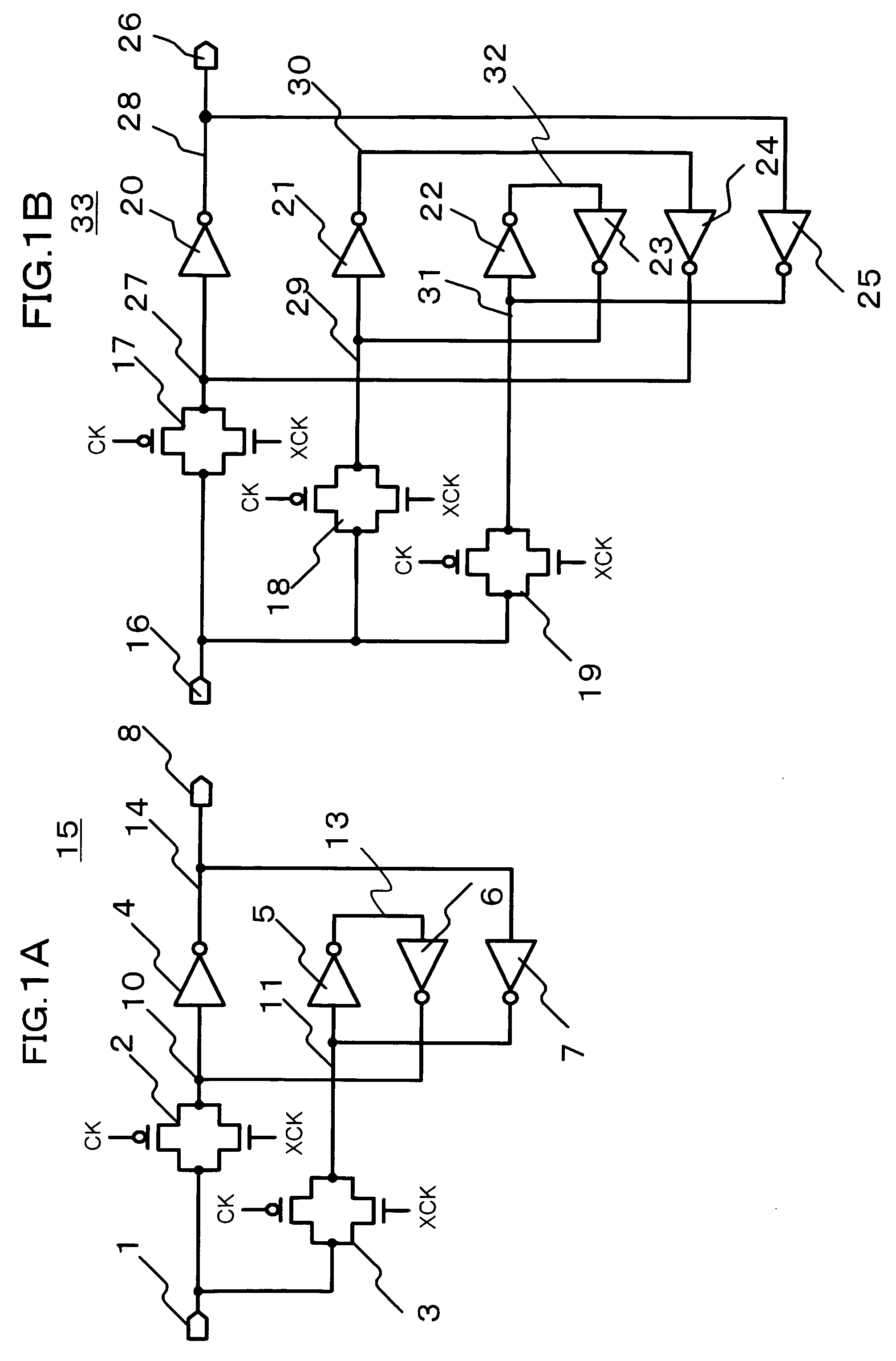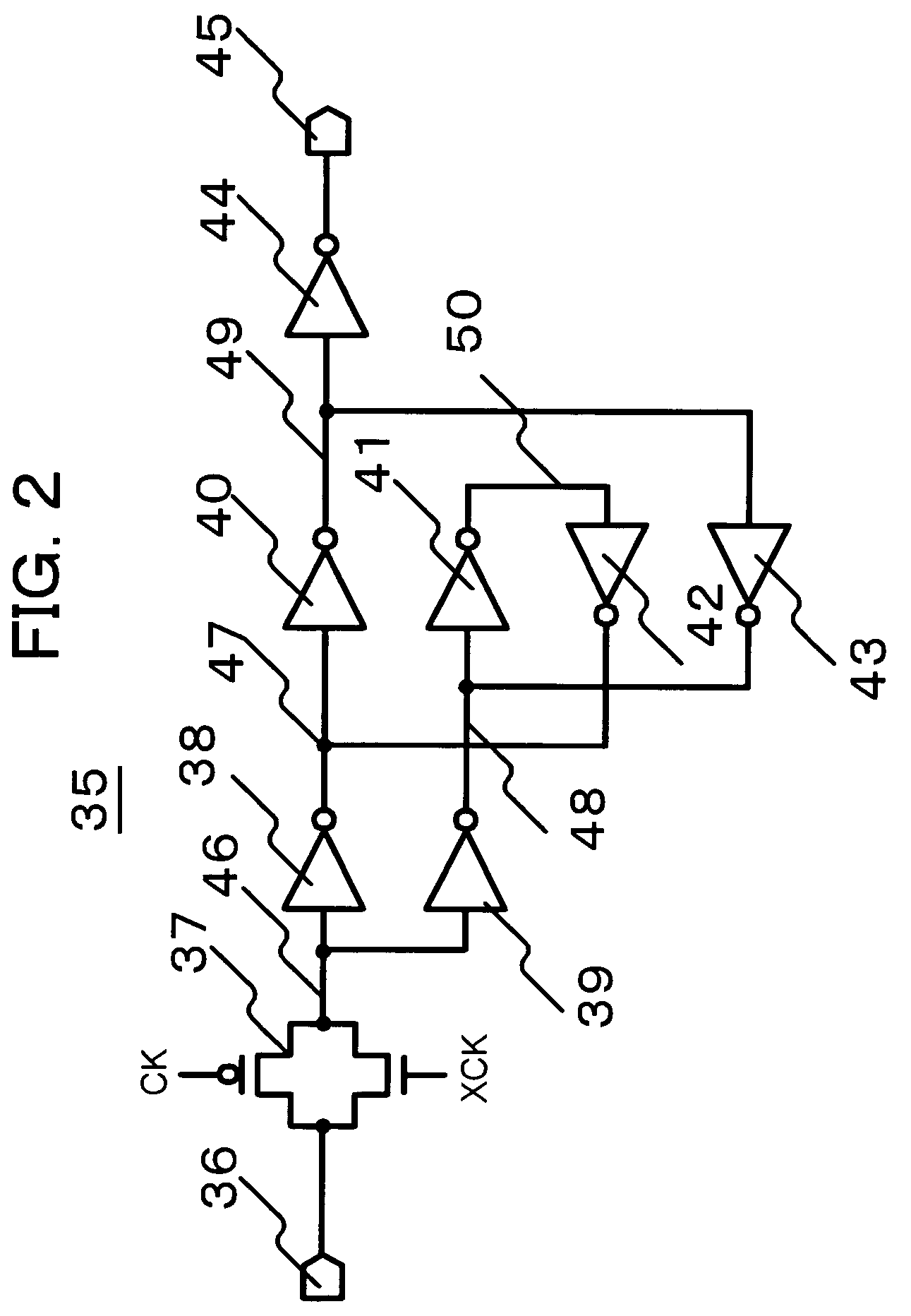Latch circuit
a latch circuit and circuit technology, applied in the field of latch circuits, can solve the problems of permanent damage to a specific portion of the circuit, soft error, circuit malfunction, etc., and achieve the effect of increasing the soft error resistance, minimizing the increase in the area occupied, and not decreasing the response speed of the circui
- Summary
- Abstract
- Description
- Claims
- Application Information
AI Technical Summary
Benefits of technology
Problems solved by technology
Method used
Image
Examples
first embodiment
[0029]A first embodiment is directed to a latch circuit that features the use of multiple inverter circuits at four or more even number of stages to feed back signals. The first embodiment is also directed to a latch circuit having a configuration in which input signals are transmitted to multiple nodes and are fed back by two-stage inverter circuits. In the latching according to the first embodiment, since the time required for the feedback is increased, there is an advantage in that the time taken until a malfunction state occurred due to soft error becomes stationary increases. On the other hand, since the input signals are transmitted to the multiple nodes, there is an advantage in that the response speed of the latch circuit is maintained. The first embodiment will now be described with reference to FIGS. 1A, 1B, 2, 3A, and 3B.
[0030]FIGS. 1A and 1B each show a latch circuit that includes inverter circuits at four or more even number of stages and that have multiple nodes to whi...
second embodiment
[0056]A second embodiment is directed to a latch circuit having a configuration in which a feedback circuit includes an inverter circuit having two input terminals and one output terminal so as to prevent feedback from being applied to a connection node having a logic level in a malfunction state. The second embodiment is also directed to a latch circuit having a configuration in which input signals input to two input terminals are fed back using feedback paths provided by two-stage inverter circuits. In the latching according to the second embodiment, since no feedback is applied to a connection node in a malfunction state, there is an advantage in that an error caused by soft error does not become stationary. In addition, since multiple feedback paths to which input signals are input are each constituted by two-stage inverter circuits, there is an advantage in that the response speed of the latch circuit is maintained. The second embodiment will now be described with reference to ...
third embodiment
[0106]A third embodiment is directed to a latch circuit having a configuration in which a feedback circuit includes an inverter circuit having two input terminals and two output terminals so as to prevent feedback from being applied to a connection node having a logic level in a malfunction state. The third embodiment is also directed to a latch circuit having a configuration in which input signals input to two input terminals are fed back involving two-stage amplification. In the latching according to the third embodiment, since no feedback is applied to a connection node in a malfunction state, there is an advantage in that an error generated by soft error does not become stationary. In addition, since feedbacks to the input terminals of the inverter circuits are implemented with predetermined two-stage inverter circuits, there is an advantage in that the response speed of the latch circuit is maintained. Now, the third embodiment will be described with reference to FIG. 8.
[0107]F...
PUM
 Login to View More
Login to View More Abstract
Description
Claims
Application Information
 Login to View More
Login to View More - R&D
- Intellectual Property
- Life Sciences
- Materials
- Tech Scout
- Unparalleled Data Quality
- Higher Quality Content
- 60% Fewer Hallucinations
Browse by: Latest US Patents, China's latest patents, Technical Efficacy Thesaurus, Application Domain, Technology Topic, Popular Technical Reports.
© 2025 PatSnap. All rights reserved.Legal|Privacy policy|Modern Slavery Act Transparency Statement|Sitemap|About US| Contact US: help@patsnap.com



